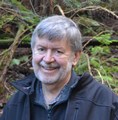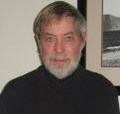Moving Towards Healthy Watersheds: Do you wonder how to visually depict "Watershed Health" for a public audience?

“For the Bowker Creek watershed, we realized that the community, especially the youth, had no memory of Bowker Creek in a natural state because almost 70% of the creek was in pipes,” recalls Jody Watson. “When developing the Bowker Blueprint, we used stylized graphics to represent an open and above-ground creek and to depict many of the design with nature concepts that the Blueprint contemplates for the watershed. We did this to help the community visualize what is possible.”








